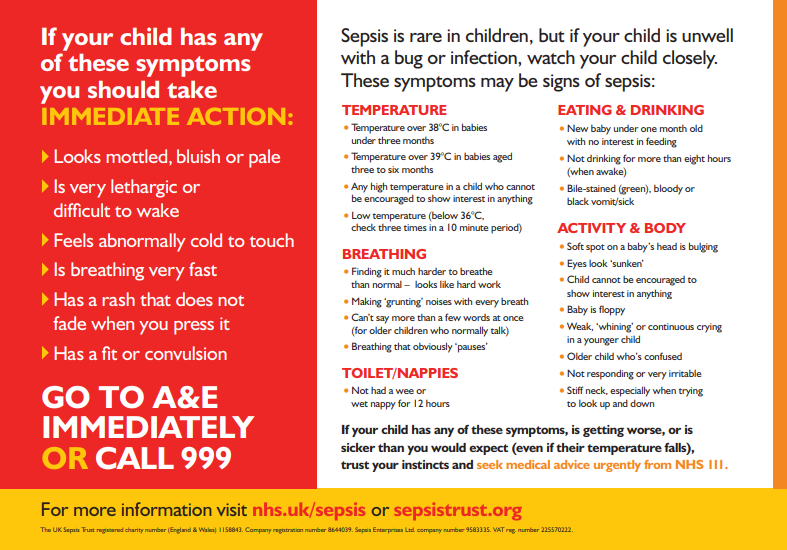Sepsis awareness: our plan to save lives in Sheffield
NHS Sheffield Clinical Commissioning Group (CCG) are spreading the word around sepsis to help healthcare staff and Sheffield patients know how to spot the signs and symptoms of this life threatening disease early.
250,000 people develop sepsis a year in the UK, with 44,000 losing their lives to the illness. Also known as blood poisoning or septicaemia, sepsis is a life threatening medical condition that occurs when the body tries to fight an infection and the immune system damages tissues and organs.
This can cause causes inflammation, leaks in blood vessels and abnormal blood clotting, all of which can lead to organ damage and death if not caught early enough. However, if the condition is caught early, sepsis can be easily treated.
Over the past year, NHS Sheffield CCG have been taking the lead on increasing awareness of sepsis across the city. This commitment to better educate people and to boost the expertise of healthcare professionals across the city also aligns with World Sepsis Day (13 September).
Work so far has included developing new tools to diagnose sepsis in children under 5, providing resources and materials for patients, establishing sepsis ‘lead’ staff in GP practices, as well as providing in-depth training for GPs, other practice staff and care home workers.
Dr StJohn Livesy, Sheffield GP and Clinical Lead for NHS Sheffield CCG said: “Sepsis awareness is high on our agenda. It’s really important that our staff know the signs and symptoms of sepsis and how the patient should be treated.
“Being able to identify this quickly means that patients with the illness can receive treatment as soon as possible, increasing their chance of survival.”
- Early symptoms of sepsis in adults or older children may include: a high temperature (fever), or low body temperature, chills and shivering, a fast heartbeat or fast breathing. If these possible early signs of sepsis are spotted, seek medical advice urgently by calling 111.
- Symptoms of more severe sepsis in adults or older children such as feeling dizzy or faint, a change in mental state (such as confusion or disorientation), diarrhoea, nausea and vomiting, slurred speech, severe muscle pain, severe breathlessness, less urine production than normal, cold, clammy and pale or mottled skin, or loss of consciousness would be considered a medical emergency. If one of these conditions is spotted, the person should go straight to A&E or call 999.
- A child under 5 may have early symptoms of sepsis if they are not feeding, are vomiting repeatedly, having trouble breathing, or have not passed urine for 12 hours. If a child has any of these symptoms, is getting worse or is sicker than you'd expect, healthcare professionals advise calling 111.
- If a child is breathing very fast, has a ‘fit’ or convulsion, looks mottled, bluish, or pale, has a rash that does not fade when you press it, is very lethargic or difficult to wake, or feels abnormally cold to touch, they should be taken straight to A&E or 999 should be called.
For more information about signs and symptoms of sepsis please visit the NHS website.

